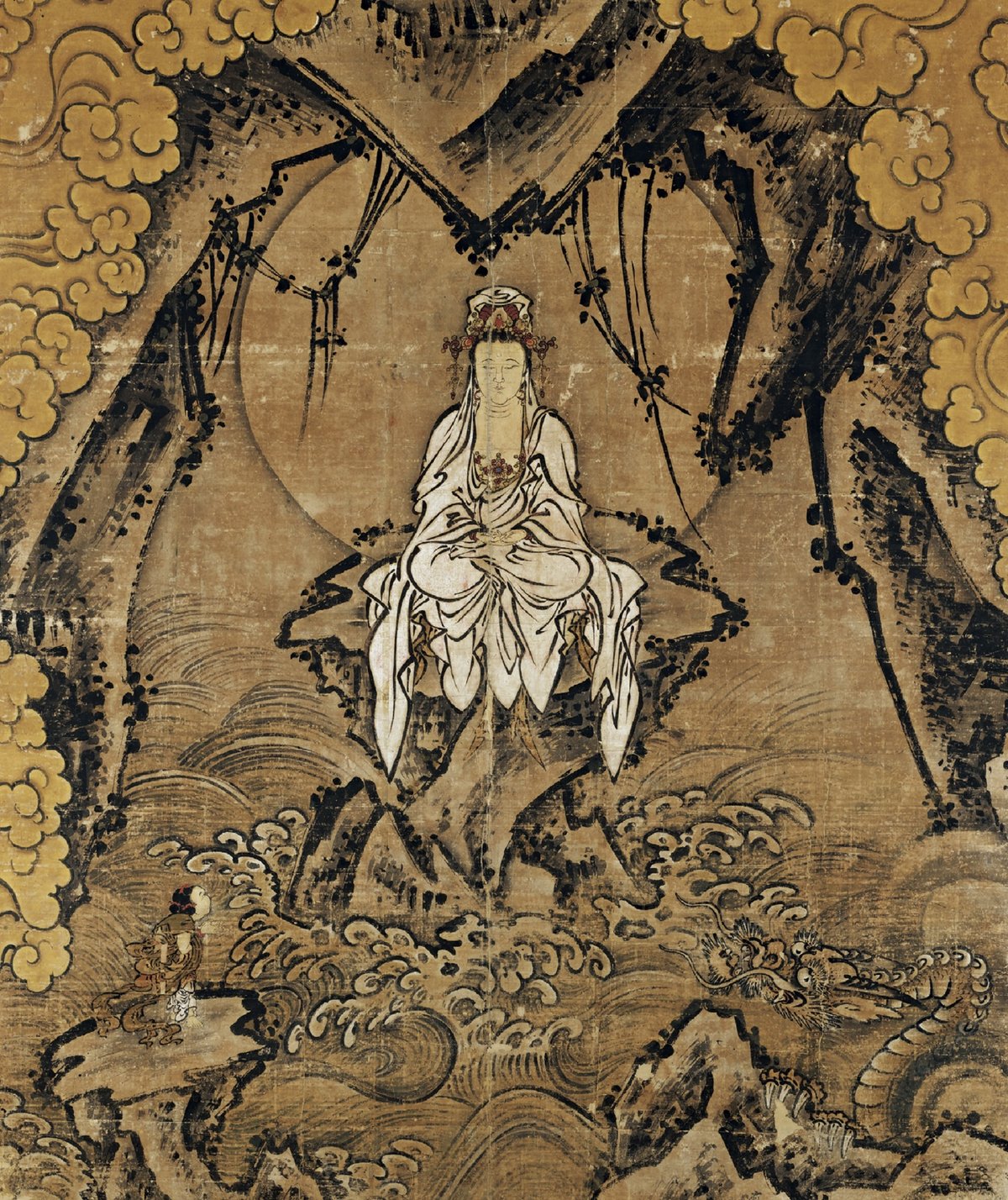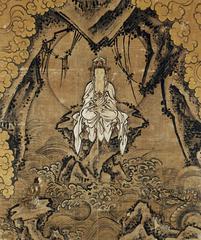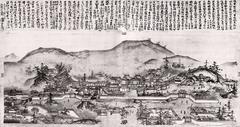
Tofuku-ji Kyoto Japan: Visiting Hours, Tickets, and Visitor Guide
Date: 14/06/2025
Introduction
Tōfuku-ji (東福寺), located in Kyoto’s Higashiyama district, is one of Japan’s most significant Zen Buddhist temples. Founded in 1236, the temple is celebrated for its rich history, architectural grandeur, and exceptional Zen gardens. Serving as one of the Kyoto Gozan (Five Great Zen Temples), Tōfuku-ji is renowned for its monumental Sanmon Gate, the scenic Tsūten-kyō Bridge, and its seasonal beauty, particularly during the autumn foliage season. This comprehensive guide provides essential details on visiting hours, ticketing, accessibility, architectural highlights, garden attractions, and travel tips to ensure a memorable and insightful visit to this iconic Kyoto historical site.
For official visitor information and updates, refer to the Tōfuku-ji official website, Discover Kyoto, and Kanpai Japan.
Historical Overview
Founding and Early Development
Tōfuku-ji was established in 1236 by Kujō Michiie, a regent of the Fujiwara clan, to rival the great temples of Nara—Tōdai-ji and Kōfuku-ji. Its name combines characters from both temples. The founding abbot, Enni Ben’en, brought Rinzai Zen teachings from China, shaping the temple’s spiritual and architectural identity (Discover Kyoto; Kanpai Japan).
Role in the Gozan System
As a principal member of the Kyoto Gozan, Tōfuku-ji played a key role in the propagation of Zen Buddhism and the cultural life of medieval Japan. At its height, the complex contained about seventy buildings and served as a center for religious, political, and artistic activity (Visit Inside Japan).
Resilience Through Adversity
Despite multiple fires and destruction during the Ōnin War and other conflicts, Tōfuku-ji was rebuilt each time, preserving its unique heritage. Notable surviving structures include the Sanmon Gate, Japan’s oldest Zen main gate and a designated National Treasure, as well as important gardens and sub-temples (Leaf Kyoto).
Modern Significance
In the modern era, the temple remains the head temple of the Tōfuku-ji School of the Rinzai sect. Restoration efforts have maintained its historical integrity, while its gardens—redesigned in the 20th century by Mirei Shigemori—remain admired for their innovation and abstraction.
Visiting Tōfuku-ji: Hours, Tickets, and Access
Visiting Hours
- Open daily: 9:00 AM to 4:00 PM (last entry at 3:30 PM)
- Extended hours: During peak autumn foliage (mid-November), hours may be extended. Always confirm on the official website.
Tickets and Fees
- General admission: 400 yen (adults)
- Children and groups: Discounted rates available
- Special exhibitions/garden access: Additional fees may apply, especially during autumn illumination events (up to 2,800 yen for special nighttime events)
- Ticket purchase: Available at the entrance and online (official website)
Accessibility
- Paths: Main temple grounds have paved and gravel paths; some steep or uneven areas exist.
- Wheelchair access: Limited in certain traditional areas; assistance may be arranged upon prior inquiry.
Directions
- Nearest station: Tōfukuji Station (Keihan Main Line/JR Nara Line), 5-minute walk from the temple.
- By bus/taxi: Accessible from central Kyoto and major tourist areas.
Travel Tips
- Best time to visit: Mid-November for autumn foliage; early mornings and weekdays are less crowded.
- Photography: Allowed in most outdoor areas; tripods and monopods are prohibited.
- Shoes: Remove shoes before entering temple buildings.
- Facilities: Restrooms and a small gift shop available on site.
Architectural & Garden Highlights
Sanmon Gate
The Sanmon Gate, built in 1425, is the oldest Zen main gate in Japan and stands as a National Treasure. The two-story structure is an imposing example of Muromachi-period architecture, featuring intricate wooden joinery and serving as a symbolic threshold between the secular and spiritual realms (Klook).
Tsūten-kyō Bridge
Spanning a ravine filled with over 2,000 maple trees, the Tsūten-kyō Bridge offers one of Kyoto’s finest views, especially during autumn. The covered walkway connects the main hall with the Kaizan-dō and is celebrated for its harmonious integration with the natural landscape (Kyoto-Kanko).
Hojo (Abbot’s Hall) and Zen Gardens
The Hojo Hall is surrounded by four unique Zen gardens designed by Mirei Shigemori in 1939, each representing different elements and principles of Zen:
- South Garden: Checkerboard moss and stone pattern
- East Garden: Cylindrical stones symbolizing the Big Dipper
- West Garden: Moss and azalea checkerboard
- North Garden: Grid of moss and stone squares
These gardens blend traditional kare-sansui (dry landscape) aesthetics with modern abstraction, offering tranquil spaces for contemplation (Inside Kyoto).
Main Hall (Hondō)
The Hondō is a reconstructed worship hall, notable for its spacious interior and traditional design. It houses a statue of Shaka Nyorai (the historical Buddha) and is central to temple ceremonies (Evendo).
Kaizan-dō Hall
Dedicated to the temple’s founder, Enni Ben’en, the Kaizan-dō Hall is accessible via the Tsūten-kyō Bridge and offers panoramic views of the temple complex and Kyoto (Klook).
Sub-Temples (Tatchū)
Tōfuku-ji encompasses 24 sub-temples, each with unique gardens and architectural features. Notable examples include Ryogin-an (minimalist rock garden) and Reiun-in (lush moss garden), showcasing a diversity of Zen aesthetics (Inside Kyoto).
The Gardens of Tōfuku-ji: Seasonal Highlights
Maple Valley and Tsūten-kyō Bridge
The temple’s maple valley, traversed by the Tsūten-kyō Bridge, is a top destination for autumn foliage. Over 2,000 maple trees create a sea of red and gold in late November (Seasonal Japanese Garden). Early mornings offer the best photography opportunities due to favorable sunlight and fewer crowds.
Hōjō Garden
The Hōjō Garden is a contemporary masterpiece, with four distinct quadrants representing legendary Chinese islands, Zen geometric precision, and cosmic symbolism. Moss gardens thrive during the rainy season (mid-June to early July), and the sand patterns are best viewed on overcast days.
Kaizan-dō and Pond Garden
The Kaizan-dō overlooks a serene pond garden with pruned azaleas. The garden is especially refreshing in late spring and early summer (Seasonal Japanese Garden).
Other Seasonal Attractions
- Spring: Fresh maple leaves and subtle cherry blossoms
- Rainy Season: Vivid green moss in the gardens
- Winter: Occasional snowfall enhances the temple’s minimalist beauty
Visitor Experience & Practical Tips
- Peak crowds: Expect large crowds and wait times during peak autumn (mid-November). Arrive early and visit on weekdays if possible.
- Guided tours: Available in English and Japanese; recommended for deeper insight into Zen practices and temple history.
- Nearby attractions: Fushimi Inari Taisha Shrine, Sanjusangen-do Temple, Kyoto National Museum.
- Events: Check for seasonal events such as Zen meditation sessions and autumn nighttime illuminations (advance reservation often required).
Frequently Asked Questions (FAQ)
Q: What are Tōfuku-ji’s visiting hours?
A: Open daily from 9:00 AM to 4:00 PM (last entry 3:30 PM). Hours may extend during special events.
Q: How much is admission?
A: Standard admission is 400 yen for adults; special events or garden areas may require additional tickets.
Q: Is Tōfuku-ji accessible for wheelchairs?
A: Partial accessibility. Some paths are uneven; contact in advance for assistance.
Q: When is the best time to visit?
A: Mid-November for autumn foliage; early morning on weekdays recommended.
Q: Are guided tours available?
A: Yes. Book in advance via the official website or local travel agencies.
Q: Can I take photos?
A: Photography is allowed outdoors; restricted indoors. Tripods and monopods are prohibited.
Visuals and Media
- Include high-quality images of the Sanmon Gate, Tsūten-kyō Bridge in autumn, and the Hojo gardens.
- Alt text suggestions: “Tōfuku-ji Sanmon Gate National Treasure,” “Tōfuku-ji Tsūten-kyō Bridge autumn view,” “Hojo Zen gardens Tōfuku-ji.”
- For virtual tours and additional visuals, refer to the official Tōfuku-ji website.
Conclusion
Tōfuku-ji Temple stands as a remarkable example of Kyoto’s spiritual and cultural legacy, offering an immersive experience through its historic architecture, world-class Zen gardens, and seasonal landscapes. Thoughtful planning around visiting hours, ticketing, and peak seasons will ensure a rewarding visit. Enhance your journey by exploring nearby historical sites and participating in guided tours or meditation sessions.
For up-to-date visitor details, special events, and audio guides, download the Audiala app and follow us on social media. Dive deeper into Kyoto’s rich heritage with our curated guides and expert travel tips.
Sources and Further Reading
- Tōfuku-ji Temple Visiting Hours, Tickets, and History in Kyoto, 2024 (Discover Kyoto)
- Tōfuku-ji Temple Kyoto: Visiting Hours, Tickets & Cultural Significance, 2024 (Kanpai Japan)
- Tōfuku-ji Temple Kyoto Overview, 2024 (Kyoto-Kanko)
- Tōfuku-ji Gardens and Seasonal Attractions, 2024 (Seasonal Japanese Garden)
- Inside Kyoto: Tōfuku-ji Temple Guide, 2024 (Inside Kyoto)
- Klook: Tōfuku-ji Temple Highlights, 2024 (Klook)
- Visit Inside Japan: Kyoto Gozan Zen Temple Rankings, 2024 (Visit Inside Japan)
- Leaf Kyoto: Tōfuku-ji Temple (Leaf Kyoto)
- Hasalas Travel: Tōfuku-ji Temple (Hasalas Travel)
- Evendo: Tōfuku-ji Temple (Evendo)












































































